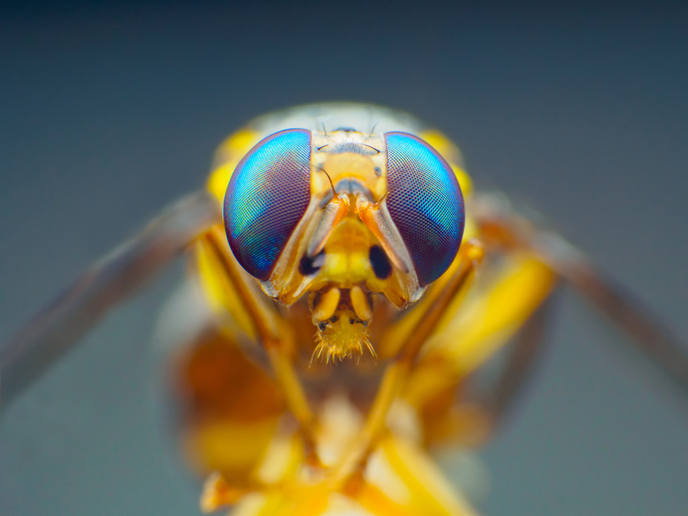Fruit flies, tiny but amazingly smart
Can a fruit fly’s brain have anything in common with a human’s? Out first instinct is to laugh at the idea – we are, after all, comparing our evolved human brain to that of a tiny insect. However, the truth is that no matter their size, animal brains function in similar ways, further evidence of which has recently been provided in a study supported by the EU-funded HBP SGA3 project. Published in the journal ‘Nature’, the study shows us that fruit flies (Drosophila melanogaster) have more advanced cognitive abilities than scientists had previously thought. The researchers discovered that fruit flies are capable of attention, working memory and conscious awareness – abilities we usually only associate with mammals. By combining virtual-reality behaviour with neurogenetic manipulations and in vivo brain imaging, they observed the formation, distractibility and eventual fading of a memory trace in fruit flies’ brains. “Despite a lack of obvious anatomical similarity, this research speaks to our everyday cognitive functioning—what we pay attention to and how we do it,” notes study senior author Prof. Ralph Greenspan of the Kavli Institute for Brain and Mind (KIBM) at the University of California, San Diego, in a news item posted on the university’s website. “Since all brains evolved from a common ancestor, we can draw correspondences between fly and mammalian brain regions based on molecular characteristics and how we store our memories.”
In the virtual reality arena
To investigate the fruit fly’s behaviour, the researchers built an immersive virtual environment consisting of a panoramic arena to provide visual stimulation and an infrared laser to serve as an aversive heat stimulus. The flies were tethered, but able to flap their wings freely. They were given the illusion of flying without any constraints thanks to the constantly updated virtual reality using real-time machine-vision cameras that tracked the flies’ wing movements. The researchers employed conditioning tasks in which flies were allowed to either orient away from an image associated with an undesirable heat stimulus (an upright T) or orient towards another image not associated with heat (an inverted T). Two types of conditioning were tested: delay conditioning and trace conditioning. In delay conditioning, the visual stimulation overlapped in time and ended together with the heat. In trace conditioning, the heat was delivered 5 to 20 seconds after showing and removing the visual stimulus. In the intervening time, the flies retained a trace of the visual stimulus in their brains. Real-time calcium activity tracking allowed the team to record the formation and duration of the flies’ living memories. When a distraction in the form of a gentle puff of air was introduced, the visual memory faded more quickly in the flies’ brains. “This work demonstrates not only that flies are capable of this higher form of trace conditioning, and that the learning is distractible just like in mammals and humans, but the neural activity underlying these attentional and working memory processes in the fly show remarkable similarity to those in mammals,” states study lead author Dr Dhruv Grover, also from the KIBM. “This work demonstrates that fruit flies could serve as a powerful model for the study of higher cognitive functions. Simply put, the fly continues to amaze in how smart it really is.” The HBP SGA3 (Human Brain Project Specific Grant Agreement 3) project ends in 2023. For more information, please see: HBP SGA3 project website
Keywords
HBP SGA3, brain, fly, fruit fly, mammal, memory, conditioning



